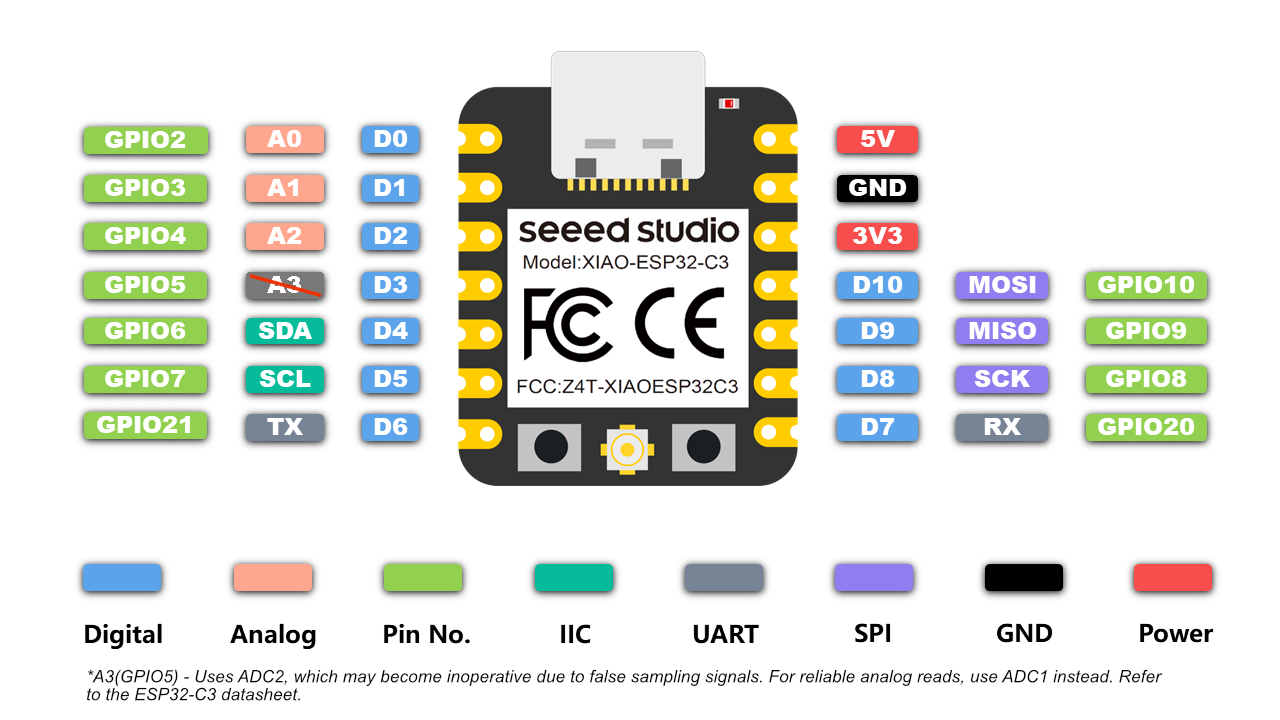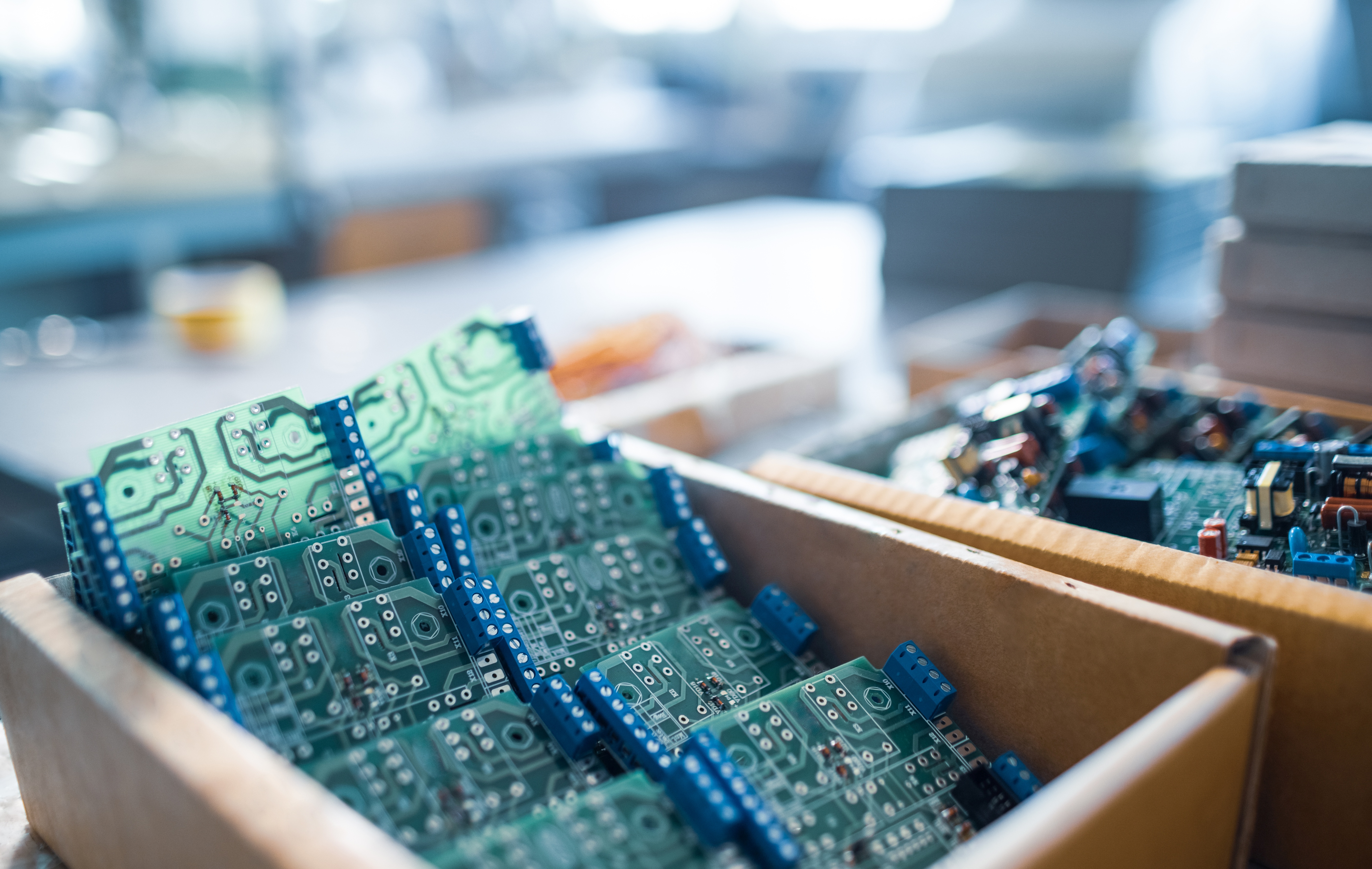As we refine the architecture of our Dynamic Emergency Monitoring System (DEMS), selecting the right microcontroller is a critical step in ensuring the efficiency, reliability, and seamless data processing required for real-time patient monitoring. After evaluating multiple options, we chose the XIAO ESP32C3, a powerful yet compact solution that meets the demanding requirements of healthcare applications, particularly in emergency settings where precision and responsiveness are paramount.
Key Advantages of the XIAO ESP32C3
One of the primary challenges in developing a wearable emergency monitoring system is balancing performance, power efficiency, and connectivity while ensuring a compact form factor that does not hinder patient comfort. The XIAO ESP32C3 offers an optimal combination of these features, making it an ideal choice for our application.
- Ultra-Low Power Consumption: In a real-time monitoring system, prolonged operation without frequent recharging is essential. The XIAO ESP32C3 is designed with low-power applications in mind, significantly extending battery life. This ensures that the device can function continuously for extended periods without requiring frequent intervention, which is particularly crucial in emergency healthcare scenarios.
- Integrated Wi-Fi & Bluetooth 5.0 (BLE): Seamless data transmission is fundamental for our system, which requires real-time communication between wearable devices, edge computing nodes, and medical applications. The XIAO ESP32C3’s support for both Wi-Fi and Bluetooth Low Energy (BLE) enables stable and energy-efficient connectivity, allowing patient data to be transmitted reliably to hospital systems and medical professionals without excessive power drain.
- High-Efficiency RISC-V Architecture in a Compact Form Factor The 32-bit RISC-V core provides sufficient computational power for processing sensor data efficiently while maintaining a minimal footprint, making it perfect for lightweight, unobtrusive wearables. Despite its small size, the XIAO ESP32C3 is powerful enough to handle local preprocessing of sensor data, anomaly detection, and data filtering, reducing the need for constant communication with external servers and thus conserving bandwidth and energy.
- Edge Computing Capabilities for Faster Decision-Making: One of the most critical aspects of emergency monitoring is rapid and accurate assessment of patient conditions. The XIAO ESP32C3 supports local processing at the edge, enabling the device to analyze sensor readings in real time before sending only the most relevant data to the hospital system. This reduces latency, minimizes unnecessary data transmission, and allows for faster response times in critical situations.
- Security and Scalability for Future Enhancements: Data security is a major concern in healthcare applications. The XIAO ESP32C3 includes built-in encryption features to ensure that patient data remains protected during transmission. Additionally, its compatibility with various IoT frameworks and cloud services allows for scalability, meaning future updates can enhance functionality without requiring significant hardware modifications.
The Role of the XIAO ESP32C3 in Our System
In the Dynamic Emergency Monitoring System (DEMS), the XIAO ESP32C3 serves as the central processing unit of our wearable device, responsible for:
- Acquiring real-time vital signs from sensors embedded in the wearable device.
- Filtering and preprocessing the data collected to remove noise and improve accuracy.
- Detecting anomalies in patient vital signs and triggering alerts when necessary.
- Wirelessly transmitting the processed data to a local gateway or cloud-based hospital system.
By integrating this microcontroller into our system, we ensure that our wearable technology is efficient, responsive, and practical for real-world emergency applications. The combination of low power consumption, reliable wireless communication, and local processing allows us to enhance patient monitoring while reducing strain on healthcare infrastructure.
Conclusion
The selection of the XIAO ESP32C3 is a crucial step toward building a scalable, efficient, and reliable emergency monitoring solution. Its advanced capabilities enable us to bridge real-time sensor data acquisition, preprocessing, and wireless transmission, ensuring that medical professionals receive accurate and timely patient information.
By leveraging the strengths of this microcontroller, we are developing a system that improves response times, enhances patient safety, and seamlessly integrates with existing hospital workflows. As we move forward with prototyping and testing, the XIAO ESP32C3 will remain at the core of our design, driving innovation in emergency healthcare monitoring.


References
- Getting Started with Seeed Studio XIAO ESP32C3 - Seeed Wiki. (n.d.). Wiki.seeedstudio.com. Getting Started ESP32C3
